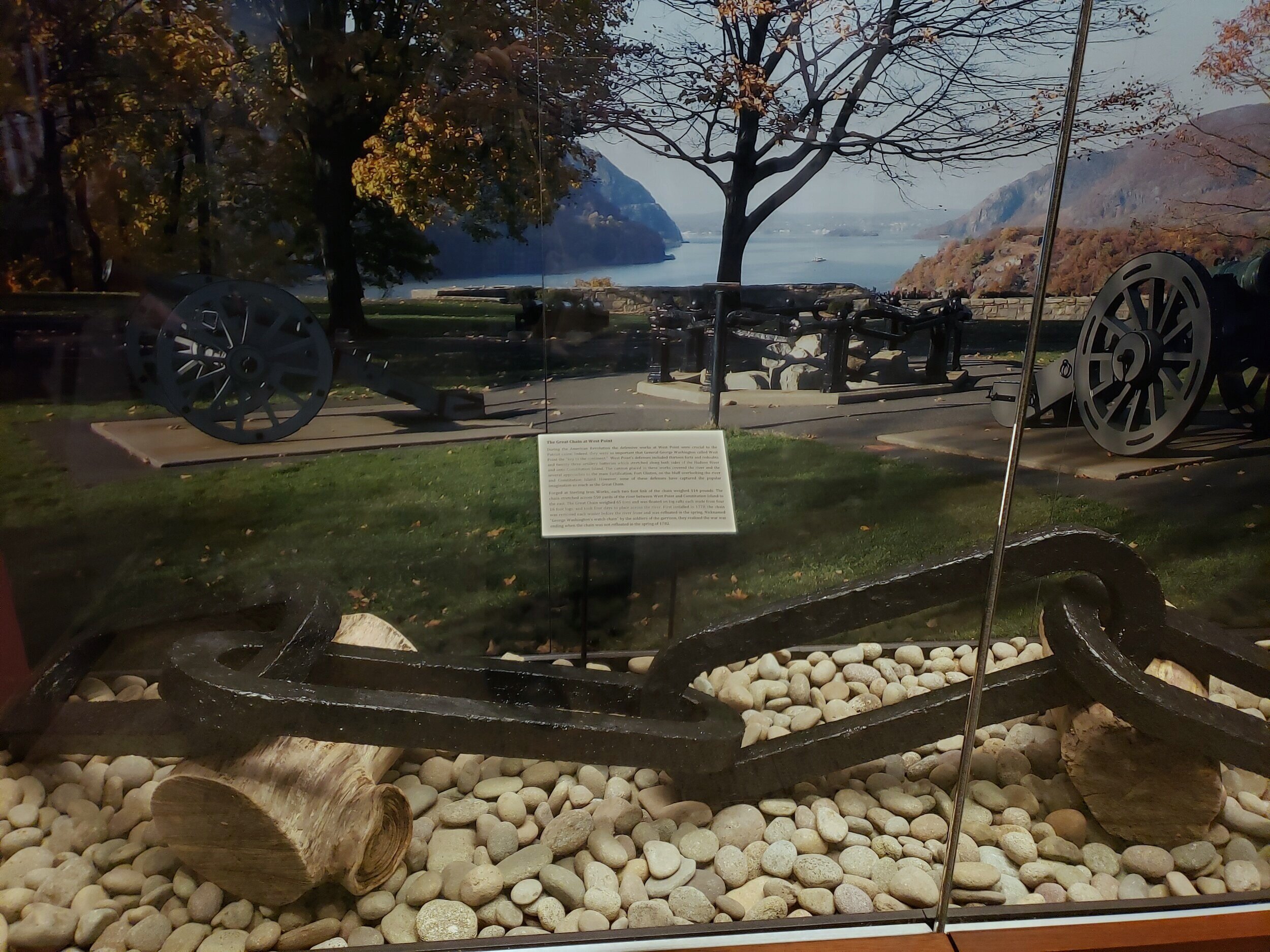
Timeline
Some of the historical events discussed in The Enlightened Series
Replica of the Great Chain showcased at the West Point Museum, New York.
1754 - 1763
French Indian War
1756 - 1763
Seven Years’ War: the French Indian War expands to a world-wide conflict.
1767
Homespun Movement: a boycott of British imports is started by Boston Quakers and continues throughout the Revolutionary War, primarily led by women.
April 19, 1775
American Revolutionary War begins with the Battles of Lexington and Concord.
January 10, 1776
Common Sense by Thomas Paine, advocating for Independence from British rule, is first published.
August 27, 1776
Battle of Long Island: the American Continental Army is defeated and British forces gain control of New York City. Britain maintains control of the City for the entirety of the war.
September 19 - October 07, 1777
Battle of Saratoga: American Continentals defeat British forces led by General John Burgoyne that were descending from Quebec to seize Albany. Known as the “Turning Point of the War” because it demonstrates that American rebels could bring the war to a draw on their own. This leads to treaties with France and Spain.
September 26, 1777
British forces capture Philadelphia. Congress evacuates to York, Pennsylvania. The Continental Army eventually retreats to Valley Forge for the winter.
October 06, 1777
Fort Montgomery falls to British forces led by Lieutenant General Sir Henry Clinton that were moving northward from New York City to meet Burgoyne’s forces in Albany as one of a three-part assault. Learning of the surrender at Saratoga, Clinton returns with his forces to Manhattan.
Fall 1777
After the British defeat at Saratoga, Lord North convinces Parliament to repeal several acts taken against America and sends another committee to attempt to negotiate peace between Britain and America. The Americans are aware of the tenor of Parliamentary debate on the subject. In a March 01, 1778, letter by George Washington to his friend, American-born Lord Brian Fairfax, Washington reacts with disappointment to the insincerity of the peace proposals.
1777 - 1778
Conway Cabal seeks to remove George Washington from command of the Continental Army, starting in October 1777 with a letter by Brigadier General Thomas Conway that circulates, indirectly criticizing Washington. The movement flourishes under former Congressional delegate Thomas Mifflin. There is never a formal challenge to remove Washington, and the political maneuvering ends with a number of duels. Conway apologizes to Washington and resigns in April 1778.
February 02, 1778
American Deputy Quartermaster General, Colonel Hugh Hughes, contacts Stirling Iron Works in Warwick, New York to commission construction of the Great Chain. This is the third effort to cut-off travel on the Hudson River. Captain Thomas Machin oversees the project.
April 1778
News of an alliance with France begins to circulate in America. It is officially ratified by Congress in May. By an order dated May 05, 1778, General Washington outlines a show of Thanksgiving, which includes a parade of the troops and cannon salutes.
April 26 - 30, 1778
The Great Chain is stretched across the Hudson River at West Point, New York. It is removed during the winter seasons through 1782. When General Washington does not order the Chain to be reinstalled in the spring of 1783, the Continentals realize the war is finally drawing to a close.
June 13, 1778
The Carlisle Peace Commission, sent by Lord North, officially delivers a peace treaty to Congress. The terms are rejected because they do not include recognition of American independence from Britain or the removal of British forces from American shores.